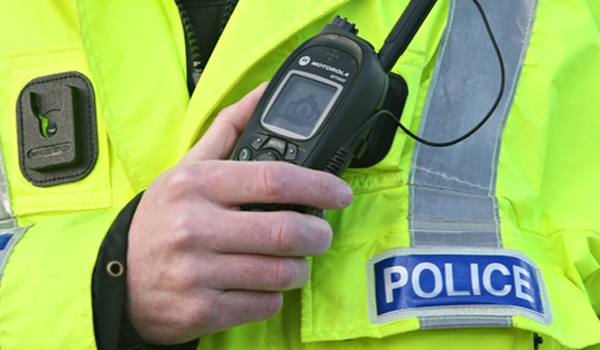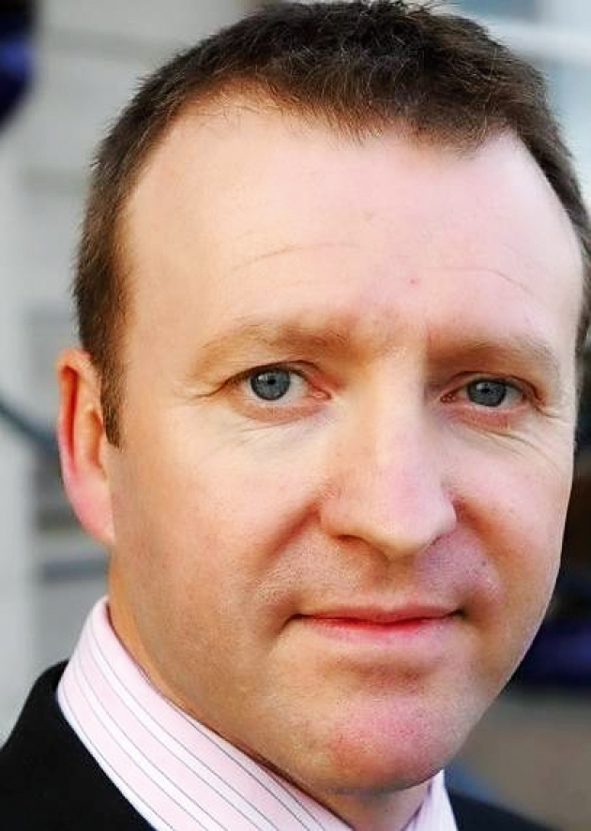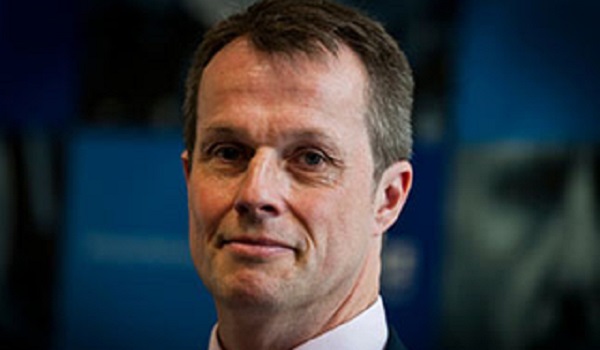Home Office ‘still not on top’ of ESN programme
The endless delay in delivering the new Emergency Services Network (ESN) is creating a “crisis of confidence” in the emergency services according to the latest progress report from the Public Accounts Committee (PAC) published today (July17).
It says the police, fire and ambulance services no longer have trust in the “crucial communications system being delivered” as costs continue to rise while the benefits are still unclear.
“Neither the emergency services, nor the PAC, are convinced that the Home Office has a credible plan to deliver a reliable and effective service anytime soon. In the meantime, services are having to find ‘work arounds’ and buy new equipment to prop up the old Airwave system,” said PAC chair Meg Hillier.
“The Home Office’s reset of the ESN programme has failed to deliver any more certainty. The financial benefits originally predicted for this programme are rapidly evaporating and it will not now realise cost savings, on the most optimistic forecasts, for at least a decade.
“The key technology behind the ESN is not yet fully proven and we were not convinced that the Home Office has the capability and plans to deliver a coherent single system that provides the functionality and dependability the emergency services demand.”
The PAC report – Emergency Services Network: further progress review – says the Home Office’s original approach was “far too optimistic given the level of risk, and its governance arrangements were insufficient to deal with problems that emerged”. The ESN is now three years late and expected to cost the taxpayer at least £3.1 billion more than planned, it adds.
In 2018, the Home Office announced it had ‘reset’ the programme and would deliver it in several phases, but the PAC says it is not yet convinced that enough has been done to turn it around.
The PAC report is concerned that the plan for delivering the ESN is “still not sufficiently robust” and the Home Office “does not yet have the skills to make it work”.
“The programme faces substantial levels of technical and commercial risk, and failures to date have undermined the confidence of users that the programme will deliver a system that is fit for purpose and meets their needs,” it adds.
“On current evidence it seems inevitable that there will be further delays and cost increases. The department has put itself in a position where the status quo is costly and leaves little option but to progress with the ESN.
“The committee has examined this programme on eight occasions and we remain concerned about its progress and the Home Office’s ability to meet the challenges ahead.”
Emergency services were meant to have started transitioning to the ESN in September 2017, but the PAC says that nearly two years later the Home Office still does not yet have an integrated plan for how and when each emergency service will deploy ESN.
“Technology for some parts of ESN is still not yet ready, for example, work to build a network to enable emergency service aircraft to use ESN has not yet started and coverage is not available everywhere it is needed, including on underground railways,” it adds.
“The Department has extended the Airwave contract to December 2022 but is already describing this as a ‘not before’ date rather than a realistic target for when ESN will be ready.”
The report recommends that the Home Office should set out, by October 2019, a detailed, achievable, integrated programme plan, including a realistic date for turning off Airwave and the cost of any extension of Airwave that may be needed and update the committee when this plan is ready.
It also wants written confirmation of the steps that have been taken to improve senior oversight of the programme, ensure assumptions are subject to appropriate challenge and to make sure the findings of independent assurance reviews are widely shared and taken seriously.
The PAC says an unhealthy ‘good news’ culture in the Home Office meant it failed to heed warning signs that the programme was undeliverable.
“Many of the issues with the Department’s original approach were foreseeable and should have been challenged earlier. For example, the Department could have taken a more incremental approach from the start and should have allowed more time to get planning permission for sites on which to build masts,” says the report.
Only two of the 292 new mobile phone sites planned for rural areas have so far been completed. “We have been warning that ESN is a high-risk programme since 2016, but only now does the Department accept that it was too optimistic about how long it would take to build ESN,” said the PAC. “The Department admits that where problems had been identified, they were not escalated properly, which meant it missed opportunities to correct its approach earlier.”
For example, the senior responsible owner for the programme was not made aware of an early report, which had identified some of the issues and risks with the Home Office’s approach. Although the current accounting officer quickly commissioned an independent review of the programme when he took up post in 2017, and that, as a result, action was taken to reset ESN, the PAC said it was “concerning that such a report was necessary”.
The PAC report also warned that mismanagement of the programme means the emergency services “do not yet have confidence that ESN will provide a service that will meet their needs”.
The committee’s previous examinations of the e-borders programme and the modernisation of the Disclosure and Barring Service highlighted how a lack of understanding of user needs can lead to programme failure.
“The intended users of ESN have not yet seen enough evidence that it would be ready to replace Airwave by December 2022,” says the report. “The new incremental approach adopted by the Department could improve users’ confidence in the programme. But the initial test, the first version of ‘ESN Direct’, will be used by only about 120 users in immigration enforcement, a tiny fraction of the 300,000 potential ESN users.”
The PAC says that while the Home Office continues to say it will not force users to accept ESN until they all agree it is ‘as good’ as Airwave, it has not defined what this means with sufficient clarity. It has also yet to confirm what happens if some users require expensive changes before they will accept ESN.
The report recommends that the Home Office, “without delay”, should agree with users a set of specific and detailed criteria that will be used to determine when ESN is ready to replace Airwave, and who will ultimately decide when those criteria are met.
The PAC is also not convinced that the Home Office has the plans or the skills needed to integrate the different elements of ESN into a coherent service.
“The Department’s first attempt at integrating ESN was unsuccessful, with the ‘delivery partner’ KBR failing to provide planning and collaboration between the other contractors after its role was downgraded,” says the report.
“The critical role of making all the different elements of ESN work seamlessly together has now passed to the Department, but it does not yet have sufficient skills to undertake this role. Its plans for testing ESN are not well developed and its track record of coordinating this programme so far is poor.”
The PAC says the Home Office failed to realise the implications of [network provider] EE and Motorola making plans based on different versions of telecommunications standards. It similarly failed to ensure suppliers worked together in the same location at the start of the programme, which could have improved collaboration.
“The Department intends to contract a new delivery partner, but this has not yet happened,” says the PAC. Before contracting with a new delivery partner, the PAC says the Home Office should analyse the skills and tasks needed to integrate ESN, how any skills gaps will be filled, and how lessons from the failure of the KBR contract will be applied to the new delivery partner contract.
Based on past failures to manage its contractors, the PAC says it concerned about the Home Office’s ability to manage the significant commercial risks facing the programme, including those presented by Motorola’s “monopoly position” as both supplier to the ESN and owner of Airwave.
“The Department failed to ensure contractors delivered ESN to the timetable in the original contracts,” the report notes. “It admits that the commercial structure for the ESN is highly disaggregated and adds complexity to an already difficult task, and is trying to improve the contracts by changing them. But it signed the new Motorola contract five months late and the new EE contract was still not signed when we took evidence.
“The Airwave contract has been extended to end in December 2022, but a further negotiation will be needed to cover the additional delays, which now seem inevitable given the Department’s admission that it could take longer to build and deploy ESN. It is vital that Airwave does not cease working before ESN is fully ready, but extending Airwave again is likely to further increase the costs of the programme.”
The PAC recommends that the Home Office should write to the committee by October 2019 setting out how it will manage the risks presented by Motorola’s position and the possible need to extend Airwave until it can be replaced by ESN.
Delays to the revised business case for ESN and the prospect of further increases in cost also raises doubts over the value for money case for ESN, says the PAC.
Although the forecast cost of ESN has increased by £3.1 billion, the Home Office still asserts it will eventually be cheaper than Airwave and will deliver five minutes of time saved per officer per shift. However, the PAC report highlights that this is not expected to happen until 2029, a delay of seven years compared with the 2015 business case.
“Delivering the ESN later than planned is also likely to create cost pressures for emergency services who may need to buy new Airwave devices while they wait for ESN to be ready,” says the PAC.
“The Department’s forecast costs for the programme are not finalised as they are part of a business case which is not approved. The business case is now expected to be approved in early 2020, over a year late. Given it is likely that Airwave will need to be extended further than December 2022 it seems inevitable that the £9.3 billion cost of ESN will increase again.
“This will further delay the point at which ESN is cheaper than Airwave, weakening the argument for continuing with ESN.”
The PAC wants the Home Office to ensure it delivers a revised and approved business case, which both the emergency services and the other funders of ESN support, by the end of 2019 at the latest. The business case should include an appraisal of when continuing to spend money on ESN ceases to be value for money and should set out a ‘plan B’ for what would happen if that point were reached.
In a statement responding to the report, a spokesperson for Motorola Solutions said: “We welcome the findings of the PAC report and remain committed to working with the Home Office to deliver this project, and putting the latest technology in the hands of those charged with the public’s safety. We have worked closely with the Home Office to support its new phased roll-out approach of ESN.”





